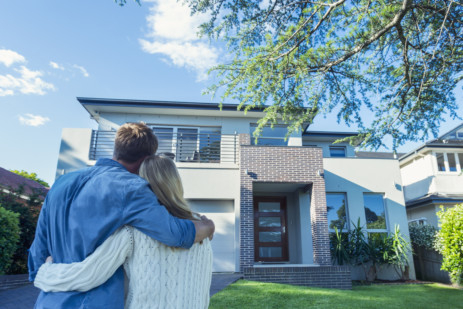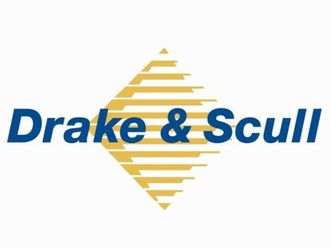
Buying property makes good financial sense, but this year, be ready to deal with some tough aspects of home financing, such as rising interest/profit rates. For those who are unaware, here’s what happened: In December 2016, the US Federal Reserve increased interest/profit rates by a quarter per cent. Since the dirham is pegged to the US dollar, any change in the US rates has an effect on UAE’s profit rates as well. Soon after, the Central Bank of UAE also raised profit rates as applied to its Certificates of Deposits (CDs). Rates have been on the rise since early 2016. For example, from the beginning of the second quarter, the six-month Emirates interbank borrowing rate has gone up by 44 basis points, which is a surge of around 33 per cent in the last nine months. CDs are issued by the central authority to banks operating in the UAE, and are a monetary policy instrument through which changes in rates are transmitted to the UAE banking system. This makes 2017 a tougher year, especially because two to three rate hikes are projected for the next 12 months.
Local impact
Any increase or decrease in rates significantly depends on local market factors, and the liquidity in the local market. If the liquidity is tight, the interbank rates go up, and if the bank deposits are on the rise, the rates tend to go down. Banks raise or lower financing rates based on its Emirates Interbank Offered Rate (EIBOR).
Due to the lower oil prices, local market liquidity had been affected, leading to a rise in EIBOR over the past year. However, as we are seeing oil prices recovering from low levels in 2015, this could have a slight positive effect on bank deposits and local liquidity.
Homeowners who are on a variable rate would have witnessed a rate rise on their existing finance in the past few months, based on their re-pricing cycle. As anticipated in the new year, home-owners should brace themselves for a slight increase in rates, as several banks have and will look to pass on the increase in funding costs.
Therefore, a small increase in financing rates over the next 12 months can make it more difficult for those of modest means. Although Interbank represents a small portion of the overall funding cost for a bank, customer deposits are what really drive the cost of funding.
New buyers
We haven’t witnessed a rise in house prices in the past two years, however, if housing prices rise while profit rates also climb, affordability can become tougher. Despite this, prospective buyers can take precautionary steps:
Maintain affordability: First-time homebuyers should be pragmatic and lower their target home price. To maintain affordability, modify your wish list and go for smaller homes.
Down payment: Save as much as possible to make a bigger down payment and reduce financing burden. Check your credit scores on a periodic basis and keep them clean.
Check your cost of financing: Calculate how much a rate hike will impact your plans, whether you are a new buyer or existing homeowner and financing customer.
As of now, profit rates in the UAE are benign — in the range of 3.5-4 per cent, which is an attractive rate, given that rents are in the range of 5-8 per cent of the capital value. However, it is likely that profit rates will rise, so now is a good time to lock in a finance, when rates are still on the lower side.
Fixed vs variable
Previously, in a low profit rate environment it didn’t matter much whether a homebuyer opted for variable or fixed financing tenure, as rate fluctuations did not leave a damaging impact. However, looking at current trends, it’s important to understand the fixed-versus-variable debate more closely. In the UAE, banks offer a combination of fixed and variable rates. When you decide to buy a home, keep in mind that when the rates go up, your monthly equated monthly instalments (EMIs) will also rise if you are on a variable rate. In case you go for the fixed option, your EMIs will not change during this period.
In addition, a fixed tenure in the UAE lasts only for short spells of one to a maximum of five years, after which you have to move to the variable option. Profit rates are also higher, the longer period you fix it for.
In today’s scenario, for a one-year fixed rate, the approximate profit rates for the first year would be around 3.49 per cent per year. After this period, it will move on to a margin of around 3 per cent plus Eibor.
However, if you opt for three-year fixed rate, you would pay in the range of 4.5-4.99 per cent per year. Thereafter, it would move to a variable of 3-3.5 per cent margin plus Eibor. As a thumb rule, run a stress test before taking home financing. Calculate whether you will have the repayment capability if rates were to be further increased. If the forward rates are projected to increase, as is expected this year, then it is better to fix your rate for a reasonable period of two to three years. Fixing for five years may prove to be slightly expensive, but could give you peace of mind in terms of a fixed EMI for a longer period.
Impact on existing customers: Majority of existing home-finance customers are on variable rates and are likely to see their EMIs increase. The advantage they had in an environment of low profit rates may have to be relinquished temporarily.
Outlook
Despite the challenges, forecasts of improved sales of properties in Dubai, starting early this year, has given a sense of buoyancy. Several banks are gearing up to meet increased demand by offering a range of flexible home finance solutions for their clients across segments.












